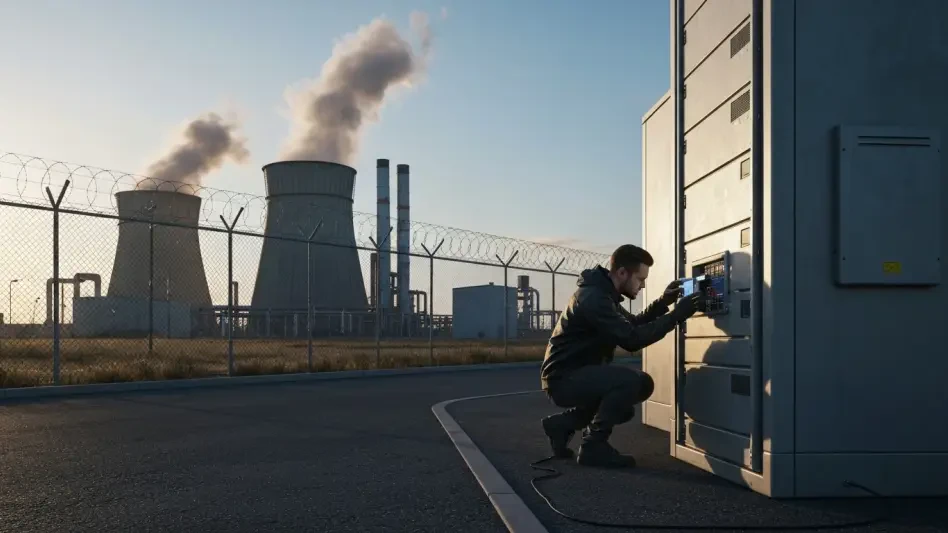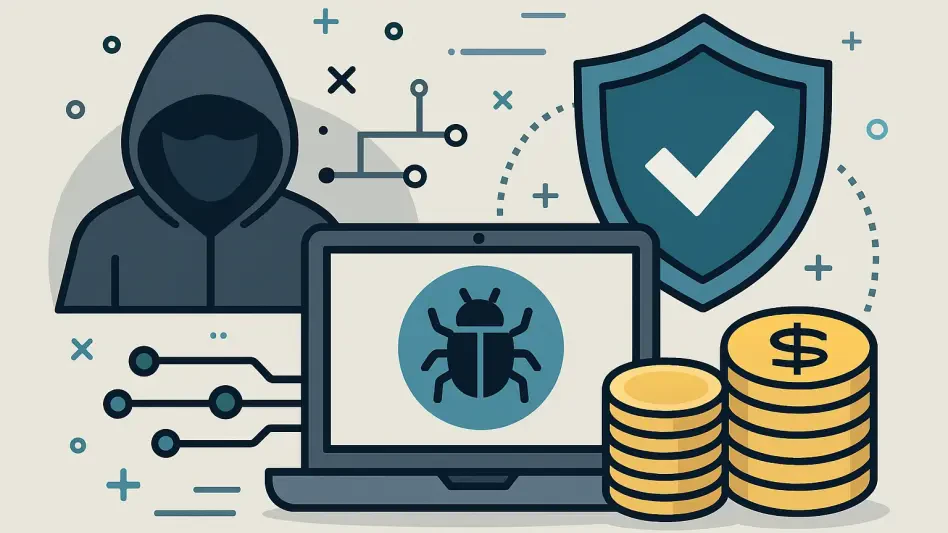In an era where cyber threats loom larger than ever, with global losses from cybercrime projected to exceed $10.5 trillion annually, Singapore stands as a beacon of proactive defense. A single breach in critical infrastructure—whether it’s power grids, rail systems, or telecommunications—could paralyze a nation, making initiatives like the Critical Infrastructure Defence Exercise (CIDeX) 2025 vital. Against this backdrop, CIDeX 2025 has emerged as a pivotal effort, uniting diverse sectors and global expertise to fortify national security. This roundup gathers perspectives, strategies, and reflections from various industry voices and cybersecurity professionals to unpack how Singapore is shaping the fight against digital dangers through this landmark event. The aim is to distill actionable insights and highlight the collaborative spirit driving these efforts.
Unpacking the Significance of CIDeX 2025
CIDeX 2025, hosted by the Cyber Security Agency of Singapore (CSA) in partnership with the Digital and Intelligence Service (DIS), has been hailed as a groundbreaking step in safeguarding 11 critical infrastructure sectors. Industry observers note that the exercise’s comprehensive scope, involving over 250 participants from 33 organizations, sets a new standard for national cyber defense. Many emphasize that in a landscape of escalating threats, such a unified approach is not just innovative but essential for resilience.
Feedback from cybersecurity forums suggests that the focus on both IT and operational technology (OT) networks during the exercise addresses a critical gap often overlooked in traditional drills. Professionals in the field highlight that Singapore’s decision to simulate real-world disruptions across sectors like energy and transport showcases a forward-thinking mindset. This perspective is echoed across multiple discussions, where the consensus points to the event as a model for other nations aiming to protect vital systems.
A recurring theme among analysts is the strategic timing of CIDeX 2025 amid rising global cyber incidents. Several voices stress that Singapore’s proactive stance—testing defenses before crises strike—positions it as a leader in preparedness. This roundup will delve deeper into specific elements of the exercise, comparing diverse opinions on its impact and exploring complementary initiatives like the Cyber5G testbed.
Key Elements of CIDeX 2025: Diverse Perspectives
Simulating Threats with Precision
One of the standout features of CIDeX 2025, according to many cybersecurity specialists, is its use of AI-crafted attack scenarios to challenge defenders. Experts from tech communities commend the realism of these simulations, which targeted vulnerabilities in sectors such as telecommunications and power. They argue that such cutting-edge methods ensure participants face threats mirroring those encountered in actual breaches.
However, some professionals caution that while AI-driven scenarios are impressive, they may not fully capture the unpredictability of human-driven attacks. A segment of industry watchers points out that coordinating responses across multiple sectors during these drills remains a complex hurdle. Despite this, the general view leans toward optimism, with many believing that the exercise’s design fosters adaptability among defenders.
Another angle discussed in cybersecurity circles is the scale of participation, with 33 organizations testing their mettle. Contributors to online panels note that this breadth ensures a holistic stress test of national systems, though a few express concern over aligning varied response protocols. These differing takes underline the balance between innovation and practical challenges in such large-scale initiatives.
Collaboration as a Cornerstone of Defense
The unprecedented collaboration during CIDeX 2025, uniting all 11 critical information infrastructure (CII) sectors, has drawn widespread praise. Many in the private sector, including representatives from major tech firms, highlight their role in shaping scenarios and training as a game-changer. They argue that blending public and private expertise creates simulations grounded in real-world applicability.
On the flip side, some government-affiliated analysts acknowledge that differing priorities among stakeholders can complicate this collective effort. They point to potential gaps in information sharing as a lingering risk, even as partnerships grow. This contrast in opinion reveals the nuanced dynamics of aligning diverse entities under a single defensive banner.
A third perspective from academic contributors emphasizes the long-term benefits of such unity. They suggest that fostering trust through joint exercises builds a foundation for rapid response during actual crises. This viewpoint reinforces the value of CIDeX 2025 as not just a one-time event but a catalyst for enduring alliances across industries.
Innovation through the Cyber5G Testbed
The launch of the Cyber5G testbed during CIDeX 2025 has sparked enthusiastic discussion among telecom security experts. Many describe it as a pioneering tool for tackling vulnerabilities specific to 5G networks through hands-on research and threat modeling. They view this as a crucial step toward securing emerging technologies integral to national infrastructure.
Contrasting opinions emerge from some regional cybersecurity commentators who question whether sector-specific solutions like Cyber5G can keep pace with rapidly evolving threats. They advocate for broader, adaptable frameworks alongside targeted innovations. This debate underscores the tension between specialization and generalization in cyber defense strategies.
A further insight from global tech panels is that the testbed could set benchmarks for telecom security worldwide. Proponents argue that Singapore’s investment in such tailored platforms signals a shift toward proactive, rather than reactive, cybersecurity. This optimism highlights the potential ripple effects of the initiative on international standards.
Training and Capacity Building for Defenders
Capacity building through CIDeX 2025’s six-day hands-on training program has been a focal point for many educators in cybersecurity. They applaud the emphasis on sharpening technical skills and response instincts, noting that such preparation is vital for frontline defenders. The practical nature of the drills is often cited as a strength that differentiates this exercise from theoretical training.
Some practitioners, however, stress that technical expertise alone isn’t enough, advocating for greater focus on strategic dialogue across organizations. They believe blending hands-on practice with high-level coordination discussions creates a more comprehensive defense mindset. This perspective adds depth to the conversation around how best to equip teams for complex threats.
Comparisons with global exercises, such as the EU’s BlueOLEx event, also surface in expert analyses. Many note that while approaches vary, the shared commitment to intensive training reflects a universal recognition of cyber resilience as a priority. This cross-regional lens offers a broader context for evaluating Singapore’s efforts in empowering its cybersecurity workforce.
Lessons and Strategies from CIDeX 2025
Drawing from various insights, a key takeaway is the power of public-private partnerships in bolstering cyber defenses. Industry roundtables frequently mention that organizations should prioritize such collaborations to pool resources and expertise. This strategy is seen as a practical way to mirror Singapore’s success in uniting diverse sectors.
Another lesson echoed across cybersecurity blogs is the importance of tailored training to address sector-specific risks. Experts suggest that businesses and agencies invest in customized programs to better prepare for targeted attacks. This advice stems from the observed impact of CIDeX 2025’s focused drills on participant readiness.
A final point raised in professional networks is the need for continuous adaptation to new technologies and threats. Many recommend staying informed about national cyber defense initiatives and advocating for awareness within workplaces. This proactive stance aligns with the innovative spirit of CIDeX 2025, encouraging ongoing vigilance among all stakeholders.
Reflecting on a Milestone in Cybersecurity
Looking back, CIDeX 2025 proved to be a defining moment in Singapore’s journey toward unparalleled cybersecurity, as diverse voices came together to test and strengthen national defenses. The insights gathered from industry professionals, academics, and global observers painted a picture of a nation committed to innovation and unity. Moving forward, organizations and individuals are encouraged to build on this momentum by fostering partnerships and exploring sector-specific solutions like the Cyber5G testbed. Staying engaged with emerging tools and national strategies will be critical to sustaining resilience. As cyber threats evolve, adopting a mindset of collaboration and preparedness remains the most effective path to securing a digital future.








